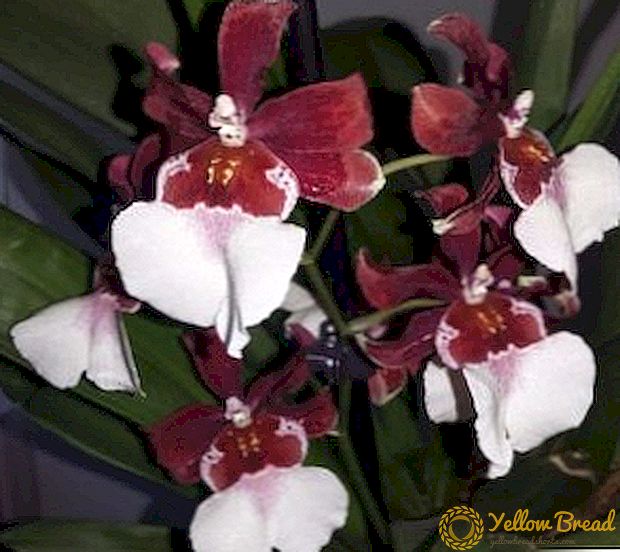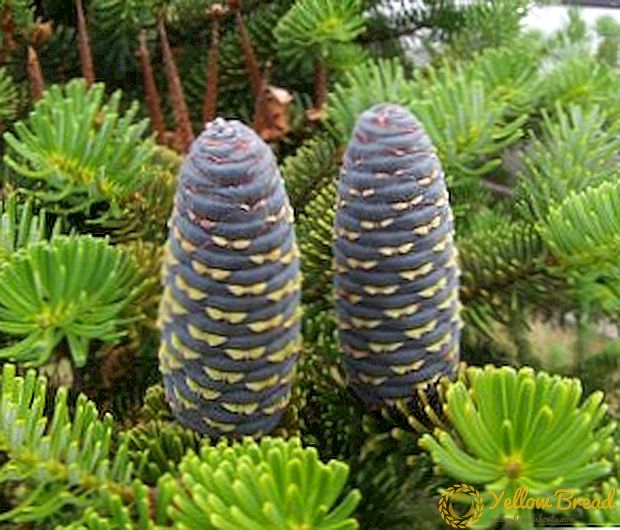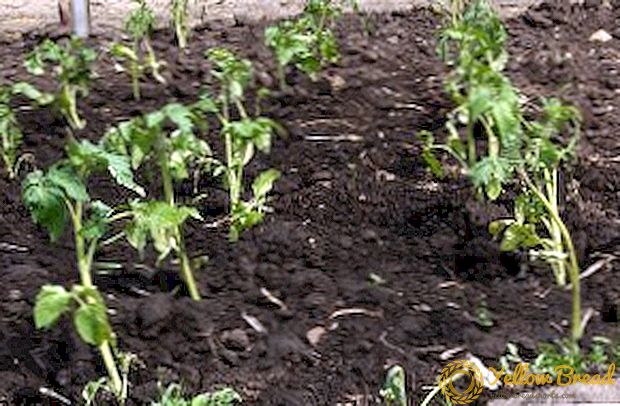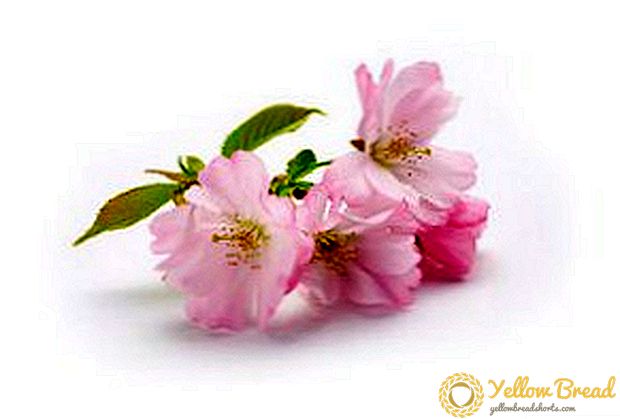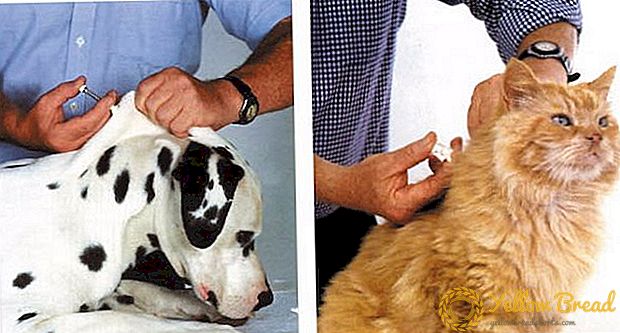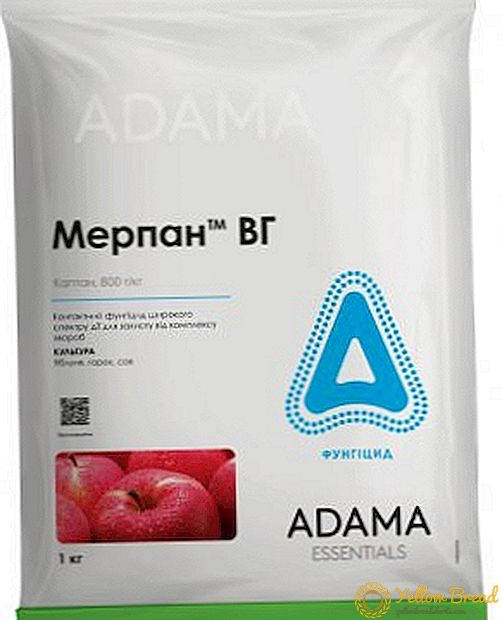 Roosters - fighters from nature, this quality is incorporated in them at the genetic level. An active male, worthy to continue his race should have the strength, endurance and responsiveness. Regardless of the breed, a real male is ready to prove the presence of these qualities every day in open battle. There are quite a few fighting chicken breeds, each of which has its own characteristics and positive qualities. Therefore, cockfights are quite popular in our time, and breeders are engaged in breeding pure breeds of sports chickens. Many of them received the name from those territories where they were withdrawn. For example, English, Indian, Malay, Egyptian, Moscow. All fighting breeds have strong bones and muscles, tight plumage, deep chest, legs wide apart, with strong claws. And most importantly, the fighting cocks are characterized by high endurance, aggressive character and the absence of fear.
Roosters - fighters from nature, this quality is incorporated in them at the genetic level. An active male, worthy to continue his race should have the strength, endurance and responsiveness. Regardless of the breed, a real male is ready to prove the presence of these qualities every day in open battle. There are quite a few fighting chicken breeds, each of which has its own characteristics and positive qualities. Therefore, cockfights are quite popular in our time, and breeders are engaged in breeding pure breeds of sports chickens. Many of them received the name from those territories where they were withdrawn. For example, English, Indian, Malay, Egyptian, Moscow. All fighting breeds have strong bones and muscles, tight plumage, deep chest, legs wide apart, with strong claws. And most importantly, the fighting cocks are characterized by high endurance, aggressive character and the absence of fear.
- Azil
- Belgian fighting
- Indian fight
- Lari
- Madagascar Fight
- Old English Fighting
- Sumatran
- Hint
- Shamo
- Yamato
Indian, Malay and English breeds are most common in breeders' farms. However, if you wish, you can choose a bird of any breed, each of which has its own advantages. Their representatives are different from their other brethren, both in appearance and in character, which, in principle, is not surprising, since fighting chickens are the oldest breed on earth.
Azil
Homeland fighting breed Azil - India, and in Europe they are called Raja. This breed is considered the oldest, and is very popular among breeders. Such birds are distinguished by remarkable strength and ability to conduct several battles in a row, winning almost all of them. In addition, they are excellent training. There are 2 types of breed Azil, which differ in the weight of roosters. Reza - medium-sized birds, weighing 2 - 3 kg, and Coolangi, - big chickens, weighing about 5-6 kg.  They are strong, fleshy birds, characterized by medium height, short muscular legs with sharp spurs and rigid plumage, tight to the body. The ears are small, red, there are no earrings, but on the head a large and strong beak stands out. The color of Azil is motley-red, the neck and back are golden-red, the tail is black with a bright green tint. Also there is a gray color, brown and black-and-white-blue, with a silver neck. During the period of growth, it is necessary to provide Azil with a high protein and vitamin content. Fully formed and mature, the representatives of this breed become to the second year of life. Egg production is rather low - up to 60 eggs per year.
They are strong, fleshy birds, characterized by medium height, short muscular legs with sharp spurs and rigid plumage, tight to the body. The ears are small, red, there are no earrings, but on the head a large and strong beak stands out. The color of Azil is motley-red, the neck and back are golden-red, the tail is black with a bright green tint. Also there is a gray color, brown and black-and-white-blue, with a silver neck. During the period of growth, it is necessary to provide Azil with a high protein and vitamin content. Fully formed and mature, the representatives of this breed become to the second year of life. Egg production is rather low - up to 60 eggs per year.
Despite the fact that these chickens are excellent fighters with a snooty character, they are very friendly to the owner, feel his mood and character, and even recognize him by voice. With a single movement of the human hand, the rooster immediately becomes a pose, demonstrating its advantages.
 This breed is simply intended for competitions, moreover, they are necessary for Azil, because without regular battles he withers. In battle, the rooster is smart, cunning, fearless and enduring, has a thievish fighting technique in which he constantly deceives his opponent. He always fights to the end, and is not afraid even of those who are larger than him. Such roosters need to create army conditions, since they very much feel the character of their masters. In a weak-willed person, Azil will be a bad fighter, lazy and may simply not want to train.
This breed is simply intended for competitions, moreover, they are necessary for Azil, because without regular battles he withers. In battle, the rooster is smart, cunning, fearless and enduring, has a thievish fighting technique in which he constantly deceives his opponent. He always fights to the end, and is not afraid even of those who are larger than him. Such roosters need to create army conditions, since they very much feel the character of their masters. In a weak-willed person, Azil will be a bad fighter, lazy and may simply not want to train.
Belgian fighting
The Belgian or Bruges fighting breed of chickens hailing from Belgium, also very ancient, was bred in Flanders especially for battles around the 17th century. It looks strong, large, with an aggressive posture. The weight of the rooster is 4.5 - 5.5 kg (individuals weighing less than four kilograms of this breed are discarded), hens 3.5 - 4.0 kg.The main criterion is a strong, massive, large, muscular body with a horizontal posture of the back. This breed radiates strength and possesses tremendous stamina, although its members are not as fast and mobile as their relatives. Unlike other fighting breeds, the Belgian fighting breeds have good egg production and vitality of young individuals, which are not very susceptible to diseases.  During the growth period, the bird needs to be provided with food with a high content of protein and vitamins, as well as ample walking for the development of strong muscles. In general, the hens of this breed are unpretentious to the conditions of detention and not picky in feed.
During the growth period, the bird needs to be provided with food with a high content of protein and vitamins, as well as ample walking for the development of strong muscles. In general, the hens of this breed are unpretentious to the conditions of detention and not picky in feed.
Indian fight
In the United States, this breed is called the Cornwall Warrior, it was bred on the basis of the Azil breed, using Shamo, white Malay and yellow Cochinchins. Indian fighters are pugnacious, temperamental chickens of medium height, large, heavy, with a large amount of muscle tissue, strong, wide-spread legs, straight posture and solid shiny feathers.The mass of the rooster of this breed is 3.5 - 4.5 kg, hens - 2 kg. The Indian fighting chickens, despite their aggressiveness, are not very hardy fighters, they need a lot of time to prepare for the show, so they start incubation early, laying 40 - 50 eggs a year. A rooster from a late brood is considered to be good for breeding, as his quality of fertilizer is higher. High requirements for the standard and early breeding of this breed sometimes create problems with fertilization, so it is imperative to check the compliance of the length of the ankle of a rooster.  During the period of ripening, young birds should be fed food rich protein, with a weekly vitamin supplement. For growth and health promotion, it is important to avoid dampness and cold, and often stroll birds in the green zone. Indian fighting chickens are susceptible to blood-sucking insects, so you should regularly check the roost, nests and disinfect.
During the period of ripening, young birds should be fed food rich protein, with a weekly vitamin supplement. For growth and health promotion, it is important to avoid dampness and cold, and often stroll birds in the green zone. Indian fighting chickens are susceptible to blood-sucking insects, so you should regularly check the roost, nests and disinfect.
Lari
Chickens with a fighting spirit called "Lari" are real masters of the fight.This breed of chickens comes from areas bordering Afghanistan and Iran, where it is still widespread. In the combat technique, the birds of the Lari breed are few in the competition. Observing all the conditions of their cultivation and training, you can regularly win tournaments and cockfights. The weight of these breeds is small: cocks - up to 2 kg, hens - 1.5-2 kg. Have a good egg production - up to 100 eggs per year, although for this purpose they are not bred.
The main value of this breed is precisely in the preparation of fighters for participation in fights. Lari hens, though small in appearance, are distinguished by a warlike character. However, if they are not trained properly, they quickly lose their combat form. The head of the roosters is small, the neck is thick and long, the beak is strong, strong and muscular chest. The legs are wide apart, so that the fighting cocks make deft jumps and stand firmly on their feet. The color of this breed varies from white to motley and brownish-black plumage. Feathers are thin, without down, tight to the body, conical tail. Chests have an aggressive, cocky character and always demonstrate their advantage over weak individuals.However, they are very attached to the owner and try to show all their virtues at the slightest movement of his hand.  In winter, this breed needs to create a suitable temperature, since it has a sparse plumage, which means that the body of birds does not retain heat. In adverse conditions and cold rooms, chicken does not lay eggs. They feed chickens with high-protein food and must be released on the lawns. You should also maintain cleanliness in the place where chickens grow, regularly cleaning and disinfecting the area.
In winter, this breed needs to create a suitable temperature, since it has a sparse plumage, which means that the body of birds does not retain heat. In adverse conditions and cold rooms, chicken does not lay eggs. They feed chickens with high-protein food and must be released on the lawns. You should also maintain cleanliness in the place where chickens grow, regularly cleaning and disinfecting the area.
When buying chickens, it is important to pay attention to their external data. Weak, lethargic individuals, standing poorly on their feet, are a marriage of a breed and are not viable. Lari breed roosters also should not be settled together, as they will compete and fight to the blood. The fighters become the favorites of most fights, and they even give them nicknames for their fighting style and character. They really possess natural, natural skill, grace and strength, therefore it is extremely interesting to watch their movements.
Madagascar Fight
Madagascar high altitude fight - one of the most remarkable breeds of hens.The breed is named after the island of Madagascar, where they have long been bred by natives to participate in battles and in order to get meat. These chickens are muscular, strong, strong, resilient, trained, easily tolerate heat and rain.
Their plumage is smooth, sparse and very tight to the body, protecting it from damage during the battle.
They have black and white, red and white, red, brown, black color. The head is small, elongated, the neck is long. The skin of the Madagascar fight is red, although it may be a black tint, but the neck and legs are completely without feathers. The beak is small, but very strong, with a fleshy growth at the base. Earlobes and earrings are not.  Legs strong, widely spaced, with sharp, strong claws. The tail is small, undeveloped. The weight of the rooster is in the range of 2-5 kg, the chicken usually weighs about 2-3 kg. Rooster height 70-80 cm, chicken - up to 50 cm. This breed of chickens has a low egg production, in the first year about 20-25 eggs, the next - up to 55 pieces. For the development of muscle mass, roosters need a special protein diet. Some breeders feed their fighters with special recipes that are kept secret.
Legs strong, widely spaced, with sharp, strong claws. The tail is small, undeveloped. The weight of the rooster is in the range of 2-5 kg, the chicken usually weighs about 2-3 kg. Rooster height 70-80 cm, chicken - up to 50 cm. This breed of chickens has a low egg production, in the first year about 20-25 eggs, the next - up to 55 pieces. For the development of muscle mass, roosters need a special protein diet. Some breeders feed their fighters with special recipes that are kept secret.
This breed is bred only for fights, in battle they are ruthless, fierce, have no fear of the enemy and fight to the last of their strength.However, in relation to its owner and chickens, the Madagascar full-fledged rooster is friendly. This breed of fighting hens needs regular physical exercise, otherwise they will lose their fighting qualities. For example, for training roosters make a special treadmill. Contain fighters as usual separately, in order to avoid competitions among themselves. Madagascar fighting breed of chickens is rather peculiar, and will suit experienced breeders who are able to properly feed and intensively, systematically train such a bird.
Old English Fighting
This fighting breed is originally from England and has been bred for exhibitions and fights since 1850. It has two subspecies of chickens - сarlish (fighting, view) and oxford (more elegant, exhibition view). Carlish is considered the best, because his individuals are bigger and stronger, classic fighters. Such chickens are of medium size, strong muscles, long neck, wide, full breasts and legs extended. The tail is large, raised, slightly spread, the wings are wide and large, complemented by truncated feathers. The fighting cock has a straight, proud, posture and playful character.  The mass of the rooster is about 2-3 kg, hen - 1.5-2.5 kg. Low egg production (up to 50 eggs in the first year). They are characterized by a small head, a flat forehead, a strong curved beak, a small comb. The color can be different: from golden-wheat with golden neck, to bluish-wheat, red-backy and variegated, bluish and black-white. Standards correspond to any color of birds, the main thing - an elegant and proud posture. Chickens of this breed should not have large bones and clumsiness in their movements. Roosters of the Old English breed, as well as all fighting birds, fight among themselves, therefore it is better to keep them separately or together with the chickens. Takieptics are unpretentious in food, but require a large space for the development of muscles and maintain good shape.
The mass of the rooster is about 2-3 kg, hen - 1.5-2.5 kg. Low egg production (up to 50 eggs in the first year). They are characterized by a small head, a flat forehead, a strong curved beak, a small comb. The color can be different: from golden-wheat with golden neck, to bluish-wheat, red-backy and variegated, bluish and black-white. Standards correspond to any color of birds, the main thing - an elegant and proud posture. Chickens of this breed should not have large bones and clumsiness in their movements. Roosters of the Old English breed, as well as all fighting birds, fight among themselves, therefore it is better to keep them separately or together with the chickens. Takieptics are unpretentious in food, but require a large space for the development of muscles and maintain good shape.
Old English fighting cocks may take part in battles at the age of one year and with proper care may perform for several years.
Sumatran
Sumatran chickens have a beautiful appearance and fighting character.This is a very original, beautiful breed, which is used by people, mainly for decorative purposes, to decorate their site. Roosters have sharp double, sometimes even triple spurs, which deal deadly blows to the enemy.  The rest of the shape and structure of the body of the Sumatran chickens are the same as those of other fighting breeds. They have a small head, a small crest, a scarlet face, and large earrings. The bill is short and strong, curved towards the end. The chest is flat, with good plumage, located almost vertically, hence the bird has a smooth and graceful posture. The neck of the Sumatran fighting birds is rather long, slightly curved, turning into a broad back, the tail is very lush with long feathers. The stomach is developed poorly so as not to interfere with the rooster during the fight.
The rest of the shape and structure of the body of the Sumatran chickens are the same as those of other fighting breeds. They have a small head, a small crest, a scarlet face, and large earrings. The bill is short and strong, curved towards the end. The chest is flat, with good plumage, located almost vertically, hence the bird has a smooth and graceful posture. The neck of the Sumatran fighting birds is rather long, slightly curved, turning into a broad back, the tail is very lush with long feathers. The stomach is developed poorly so as not to interfere with the rooster during the fight.
The weight of the cocks of this breed is 3 kg, chickens - 2.5 kg. The egg production of the breed is rather low (50 eggs per year), moreover, the hens do not monitor their laying, therefore, few chickens are naturally derived. The breeder should take care of the incubator, or constantly re-buy young chickens from others. The average survival rate of young and adult birds is 86%.
Unlike most ornamental chickens, Sumatran differ by a snooty, aggressive character and often attack meat or egg relatives. By itself, this breed is quite unusual and demanding to care, so professionals should be engaged in breeding it.
Hint
The Hint fighting hen breed is also called the Turkish Azil or the Turkish Hint. They entered the territory of Europe in 1860. Roosters are very popular among fans of rooster duels and now they are considered to be an ideal sports breed, reaching a weight of 2.5 kg (chickens - 2 kg). The breed has a low egg production - only 50 eggs per year.  The body of birds of the breed Hint, a small but wide, resembling a flat egg tilted. Small feathers fit snugly to the body. The head is small, the crest is almost undeveloped, the neck is of medium length, with short plumage, always straight, which is a characteristic feature of the breed. The ears are small, red, there are no earrings, instead of them there is dark red bare skin covered with bristles. The shoulders are very strong and wide, come forward, forming a "bulging shoulder blade." The belly is poorly developed, the wings are high, so as not to interfere with the fight.
The body of birds of the breed Hint, a small but wide, resembling a flat egg tilted. Small feathers fit snugly to the body. The head is small, the crest is almost undeveloped, the neck is of medium length, with short plumage, always straight, which is a characteristic feature of the breed. The ears are small, red, there are no earrings, instead of them there is dark red bare skin covered with bristles. The shoulders are very strong and wide, come forward, forming a "bulging shoulder blade." The belly is poorly developed, the wings are high, so as not to interfere with the fight.
The legs of the chickens are short, with sharp spurs, wide apart to keep their balance during the fight. It should be noted that the roosters and hens of the Hint breed are very similar to each other, therefore the gender is recognized only by the main sexual characteristics. As for the color, it varies from bright red, gray, brown, black and white to mottled blue and other shades, although red birds are most often found on the market.
The Turkish Hint is a powerful bird with a pronounced cocky character. She immediately enters the battle, frantically pecks at the enemy and fiercely defends herself. This feature makes it possible to use the Hint fighters in fights with other breeds. By nature, such chickens are very gullible and loyal birds. They quickly adapt to the owner, recognize him, go to his hands and do not peck. This is especially important at exhibitions, when the bird is examined by judges. Chin Hint breed can not be kept with weaker breeds, as they can easily peck on them.
Shamo
 One of the rather popular in the world of fighting cocks is representatives of the Shamo breed, which in Japanese means "fighter".They were brought to Japan from Siam, and they appeared in Germany in 1953. There are 3 types of hens of this breed: large O-Shamo (a rooster weighs 4-5 kg, a chicken 3 kg); average Chu-chamo (rooster weight 3–4 kg, chicken 2.5 kg); dwarf Ko-shamo (roosters weigh from 1 to 1.2 kg, chickens about 800 grams). In the year the layer of the Shamo breed lays about 60 eggs, depending on the climate and conditions. O-Shamo and Chu-Shamo are similar to each other and differ only in weight.
One of the rather popular in the world of fighting cocks is representatives of the Shamo breed, which in Japanese means "fighter".They were brought to Japan from Siam, and they appeared in Germany in 1953. There are 3 types of hens of this breed: large O-Shamo (a rooster weighs 4-5 kg, a chicken 3 kg); average Chu-chamo (rooster weight 3–4 kg, chicken 2.5 kg); dwarf Ko-shamo (roosters weigh from 1 to 1.2 kg, chickens about 800 grams). In the year the layer of the Shamo breed lays about 60 eggs, depending on the climate and conditions. O-Shamo and Chu-Shamo are similar to each other and differ only in weight.
Breed indicators:
- extended wide head;
- powerful brows, deep-set eyes;
- very developed musculature of the cheeks;
- curved long neck;
- broad chest, with bulging naked chest;
- the color is black or black with silver, red, wheat shades; white, blue, silver, and pheasant-brown Shamo are also found (there are no strict requirements for color, but it must be clearly pronounced).
In general, Shamo is a tall, muscular cock with scanty, close-fitting feathers, straight vertical posture and the head of a bird of prey. This is a very hardy breed, but it needs to provide proper maintenance. Adult birds are not afraid of dampness and various diseases, but they need to provide a large space and constant walking. Incubation is carried out at the beginning of the year, chickens are kept warm and fed protein food as they grow. To preserve the purity of the breed and fighting qualities, it is very important to carefully monitor the crossing and to prevent mixing of blood.
Yamato
Chickens fighting breed Yamato - fighting birds that can fight with any opponent. The breed is bred by Japanese breeders for the entertainment of emperors who love cockfighting. Breeders tried to get a small, but very resistant and hardy bird with a grumpy, nasty character. Today, the Yamato hens have fully preserved all their breed characteristics.  Due to their high stamina and aggressiveness, they can easily beat stronger rivals. These small birds are characterized by weak plumage and the presence of a fleshy face. Color can be of two types: wheat and wild. The rooster has a wide, straightened, ovoid torso. The shoulders protrude forward, the neck is of medium length, slightly curved. The chest is wide and round, visible massive chest bone. The wings and tail are short so as not to interfere during the battle. The head of the Yamato is small and short, with distinct eyebrows, the comb is red.The short and strong beak of such birds allows the enemy to deliver crushing blows.
Due to their high stamina and aggressiveness, they can easily beat stronger rivals. These small birds are characterized by weak plumage and the presence of a fleshy face. Color can be of two types: wheat and wild. The rooster has a wide, straightened, ovoid torso. The shoulders protrude forward, the neck is of medium length, slightly curved. The chest is wide and round, visible massive chest bone. The wings and tail are short so as not to interfere during the battle. The head of the Yamato is small and short, with distinct eyebrows, the comb is red.The short and strong beak of such birds allows the enemy to deliver crushing blows.
Legs short or medium, muscular. The fighters of this breed are aggressive poultry who easily peck any chicken, so they need to be kept separately. In addition, even roosters and hens of this breed can fight among themselves, so they also need to be divided. When breeding, there is often a problem and reproduction of the bird, because during mating chickens with roosters enter into fierce fights, which makes the process almost impossible. This should be considered before buying representatives of Yamato. In addition, this breed has low egg production, which also complicates the breeding process. Due to the complexity of keeping and breeding, only true lovers of the breed can cope with Yamato.

